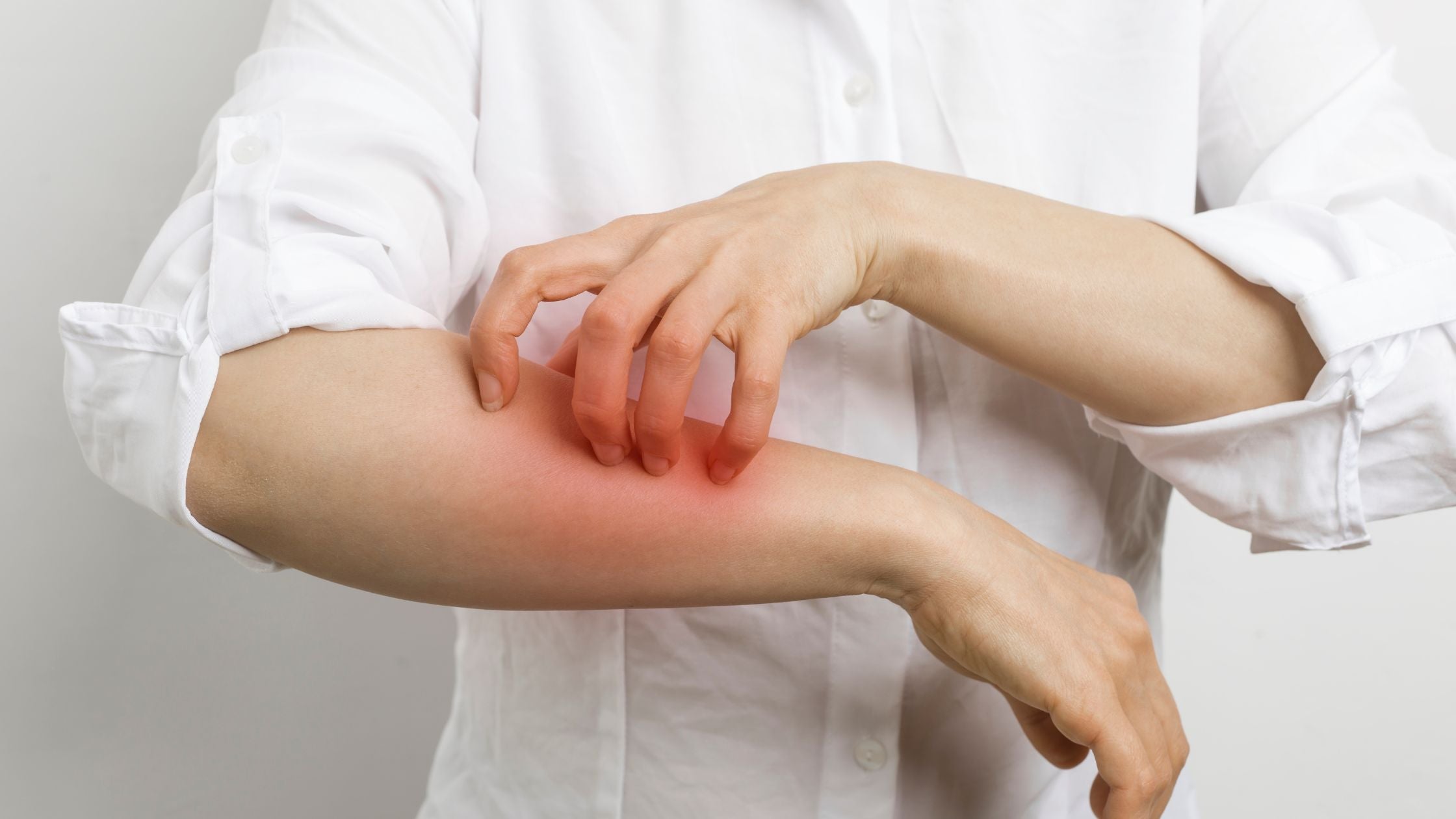Spring Allergies and Your Skin

It’s spring! And if you live in a climate with long winters, you’re probably looking forward to warmer weather and blooming flowers. But for if you’re someone with seasonal allergies, this time of year can be particularly challenging. Besides the usual miserable symptoms like sneezing and congestion, seasonal allergies can also affect the skin.
Itching, redness, and dryness are common skin symptoms of seasonal allergies and can make it difficult to achieve and maintain healthy, glowing skin. Fortunately, there are steps you can take to manage your seasonal allergies and keep your skin looking its best.
Causes of Seasonal Allergies
Seasonal allergies, also known as hay fever or allergic rhinitis, are caused by the body's reaction to certain allergens that are present in the environment during specific times of the year. These allergens can include pollen, mold, and dust mites. When these allergens enter the body, they trigger the release of histamine, which causes the symptoms associated with seasonal allergies.
The most common triggers of seasonal allergies are pollen and mold. Pollen is produced by trees, grasses, and weeds, and is present in the air during the spring, summer, and fall months. Mold is present year-round, but tends to thrive in damp environments during the summer and fall. Dust mites, which are microscopic insects that live in bedding, carpeting, and upholstered furniture, can also trigger seasonal allergies. Another common allergy is insect stings, such as those from bees and wasps. These can also cause seasonal allergies in some people.
Some people are more prone to seasonal allergies than others due to a combination of genetic and environmental factors. If you’ve got a family history of allergies, you are more likely to develop seasonal allergies. Additionally, exposure to allergens at a young age can increase the risk of developing allergies later in life.
How to Manage Seasonal Allergies
Even though seasonal allergies can be a pain, there are ways to manage the symptoms. Over-the-counter (OTC) medications such as antihistamines and decongestants can provide relief, but it's important to follow the recommended dosage and talk to a doctor before taking them.
If your symptoms are severe enough, a doctor can prescribe medications such as corticosteroids. There are also immunotherapy options that involve supervised exposure to allergens. Small doses are given to the patient and the doses are increased over time. Eventually the body becomes less sensitive to that allergen.
Natural remedies for seasonal allergies are another option for potential relief. These include:
-
Nasal saline irrigation
-
Neti pots
-
Herbal supplements such as butterbur and stinging nettle
-
Acupuncture
In addition, lifestyle changes such as avoiding exposure to allergens by staying indoors during peak pollen times, using HEPA filters, wearing a mask when outdoors during peak pollen times, and showering and changing clothes after spending time outdoors can also help manage seasonal allergies.
Everyone's experience with seasonal allergies is different, so it may take some trial and error to find what works for you.
Skincare and Seasonal Allergies
Seasonal allergies can cause skin irritation and make you more prone to skin conditions such as eczema and hives, so it’s extra important to pay attention to your skin when your hay fever is triggered.
Here are some skincare tips to help you take care of your skin during allergy season:
-
Keep your skin clean: Washing your skin with a gentle cleanser can help remove pollen and other allergens that can irritate your skin.
-
Use a humidifier: Dry air can cause skin irritation caused by seasonal allergies. A humidifier can help add moisture to the air and keep your skin hydrated.
-
Avoid harsh products: Avoid using soaps or cleansers that can strip your skin of its natural oils. Look for gentle, fragrance-free products that are less likely to irritate your skin.
-
Apply moisturizer: You should be applying moisturizer anyway, but it’s more important during allergy season for hydration. Look for a moisturizer that is hypoallergenic and fragrance-free to minimize the risk of irritation.
-
Wear protective clothing: When you go outside during allergy season, wear protective clothing such as a hat, sunglasses, and a mask to help keep pollen and other allergens away from your skin.
-
Consider over-the-counter treatments: If your skin is itchy or irritated due to seasonal allergies, consider using over-the-counter treatments such as antihistamines or hydrocortisone cream to help relieve symptoms.
Be Proactive!
Seasonal allergies are miserable for a lot of people. The sneezing and congestion are bad enough, but skin irritation and discomfort can add to the problem. If you take proactive approach to skincare during allergy season, you can manage your symptoms and enjoy the outdoors. If you experience more severe skin symptoms, such as hives or eczema, consider working with a healthcare professional to find the right treatment plan.
Managing seasonal allergies is about more than just symptom relief. It's about taking a proactive approach to your health and well-being. If you’re using Qyral’s products and want a change in formulations during allergy season, reach out to us and we can come up with a hay fever friendly compound to keep your skin looking and feeling its best!